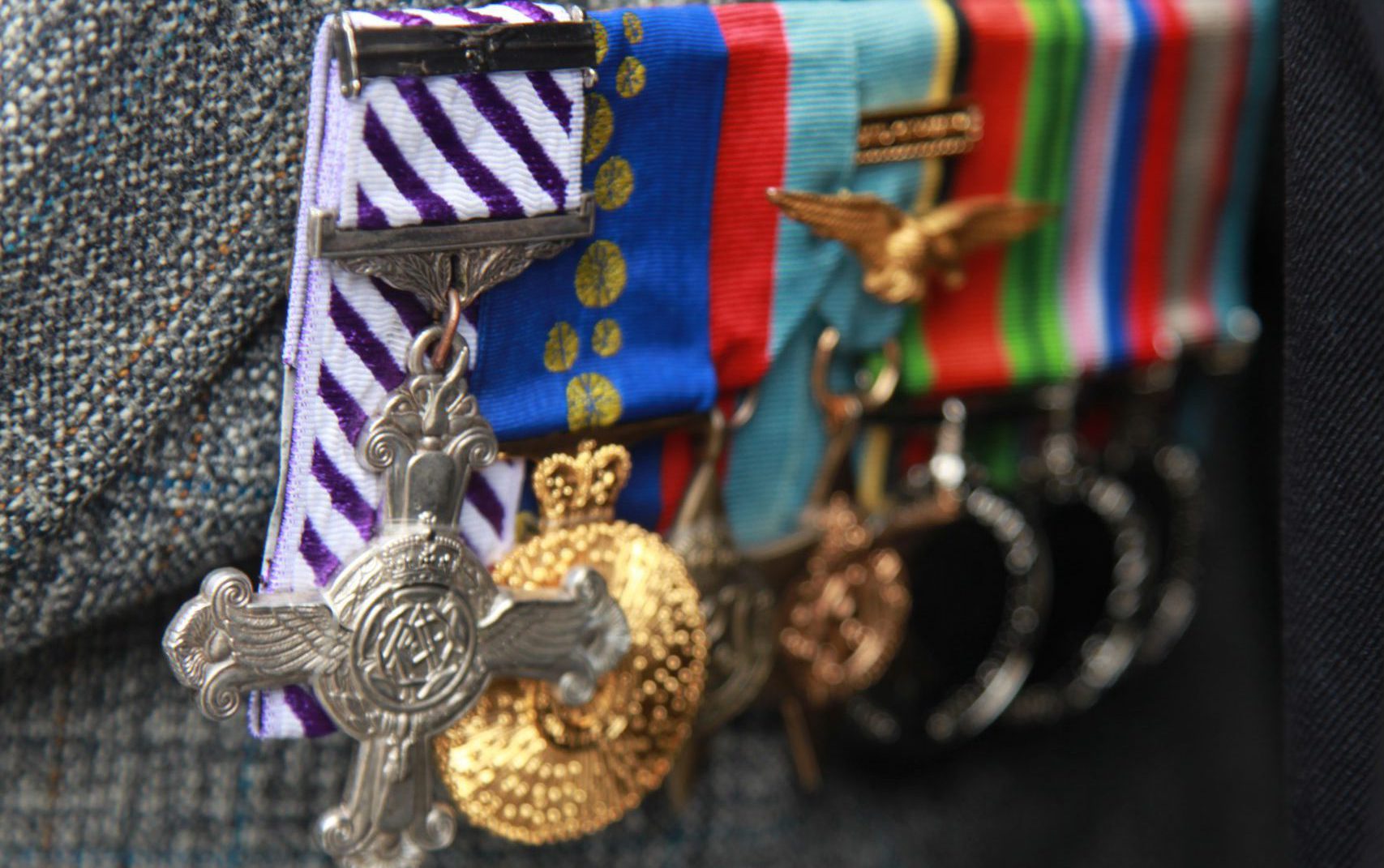Throughout the year, Australians gather to commemorate those who have served our nation and its allies in wars, conflicts and peace operations. We pause to reflect and remember the service and sacrifices made by these women and men, as well as the families who support them.
Australia’s calendar of commemorative dates includes officially gazetted days proclaimed by the Governor-General. The below calendar includes dates formally recognised by the Australian Government and dates that the South Australian veteran community commemorates each year.
Please note that dates may change depending on the anniversaries commemorated each year.
16 February
On the morning of 16 February 1942, 22 Australian nurses; survivors of the sunken merchant ship SS Vyner Brooke, were marched into the surf by Japanese soldiers off Bangka Island, east of Sumatra.
In one of the worst atrocities of Australia’s involvement in World War II, all bar one would not make it back to the beach alive. The others, their backs turned in the waist-deep water, were machine-gunned to death from behind. Lieutenant Colonel Vivian Bullwinkel alone survived by pretending to be dead rather than wounded.
19 February
At approximately 10 am on 19 February 1942, Japanese bombers and fighters attacked Darwin killing 243 allied service personnel and civilians and wounding a further 300.
Darwin was a supply base and transit camp for troops, aircraft and ships moving north to the war. Defences for the town and harbour were minimal and when the first attacks came, those manning anti-aircraft artillery performed bravely, however they were too few in number to prevent damage being inflicted.
25 April
Anzac Day, 25 April, is one of Australia’s most important national occasions. It marks the anniversary of the first major military action fought by Australian and New Zealand forces during the First World War.
ANZAC stands for Australian and New Zealand Army Corps. The soldiers in those forces quickly became known as Anzacs, and the pride they took in that name endures to this day.
12 May
In May and June 1968, astride the North Vietnamese/Viet Cong infiltration routes to Saigon, Australian units fought an intensive series of battles over a prolonged period around Fire Support Bases (FSB) Coral and Balmoral.
The Australian War Memorial describes the 26 days of intermittent fighting at Coral and Balmoral as Australia’s “largest, most sustained and arguably most hazardous battle of the Vietnam War.”
Veterans' Families Day
15 May
Veterans’ Families Day, held annually on 15 May, is a day of recognition in South Australia that honours the vital role veteran families play in supporting current and former-serving members of the Australian Defence Force.
Spouses, partners, and children of veterans often make significant personal and professional sacrifices due to the unique demands of military life—including frequent relocations, long periods of separation, and the transition from service to civilian life.
This dedicated day acknowledges the strength, resilience, and ongoing support that veteran families provide, and ensures their contributions to the defence community are recognised and celebrated.
31 May
Aboriginal and Torres Strait Islander peoples have a long tradition of fighting for Country and continue to serve among our military forces.
Although not permitted to become Australian citizens until 1967, military service is one area where Indigenous Australians have experienced less discrimination than in the wider Australian society.
The Aboriginal Veterans’ Commemorative Service is an annual service that recognises the service and sacrifice of Aboriginal and Torres Strait Islander people in all war and peacekeeping missions.
1 June
During the 1939 – 45 War, 20,000 Australian airmen served with the Bomber Command of the Royal Air Force. The training of the Royal Australian Air Force airmen who flew with Bomber Command was through the Empire Air Training Scheme which linked training organisations in Australia and Canada.
The first two Australian medium bomber squadrons formed in June and September 1941 and by the end of that same year, both were flying regular missions against Germany. From the start of April until 5 June 1944, Bomber Command supported the attacks leading up to the D-Day landings.
Australian casualties in Bomber Command were 3,486 dead and 265 injured. After the war, 750 Australian aircrew were released from German prisoner of war camps, most of whom would have flown with Bomber Command.
27 July
Only five years after the end of the Second World War, Australia became involved in the Korean War. Personnel from the Royal Australian Navy, Royal Australian Air Force, and the Australian Regular Army were committed soon after the war began and would serve for the next three years in the defence of South Korea.
Over 17,000 Australians served during the Korean War, of which 340 were killed and over 1,216 wounded. A further 29 had become prisoners of war.
15 August
Victory in the Pacific Day commemorates the date on which Japan accepted the Allied Nations’ terms of surrender and Australia’s Prime Minister Ben Chifley announced that the war was over.
World War II is a significant event in Australia’s history. Nearly one million Australians served in the armed forces during the war.
VP Day is a time to remember Australia’s war efforts from 1942 to 1945 in the Pacific region, including in Singapore, Borneo, Malaya, Papua, New Guinea and New Britain.
VP Day commemorates those who served in the war. Some 40,000 Australians didn’t return home to their families. Over 17,000 of them lost their lives while fighting in the war against Japan, some 8,000 of whom died in Japanese captivity.
18 August
The arrival of the Australian Army Training Team Vietnam (AATTV) in South Vietnam during July and August 1962 was the beginning of Australia’s involvement in the Vietnam War. Australia’s participation in the war was formally declared at an end when the Governor-General issued a proclamation on 11 January 1973.
From the time the first members of the AATTV arrived in 1962, over 60,000 Australians, including ground troops and air force and navy personnel, served in Vietnam; 523 died as a result of the war and almost 2,400 were wounded.
In early 1975, the North Vietnamese launched a major offensive in the north of South Vietnam, resulting in the fall of Saigon, on 30 April.
Vietnam Veterans’ Day is commemorated on 18 August (the anniversary of the Battle of Long Tan in 1966) – it is a time to commemorate all battles fought by Australians in Vietnam.
31 August
Australia’s commemoration of Malaya & Borneo Veterans’ Day on 31 August coincides with Merdeka Day (Freedom Day), marking the Federation of Malaya’s independence from the UK in 1957.
It’s a day to remember Australian Defence Force personnel who served in the Malayan Emergency (1948-1960) – declared by the Federation of Malaya on 16 June 1948 in response to rising violence from the Malayan Communist Party. It also honours those involved in the Indonesian Confrontation / Konfrontasi (1962-1966).
More than 7,000 Australians served in the Malayan Emergency between 1950 and its official end in 1960; 39 died in active service. In the Confrontation, 23 Australians lost their lives in service and eight were wounded while defending the new federation of Malaysia.
On this day, we also remember more than 2,000 Australians who served in post-emergency counter-insurgency operations on the Thai-Malay border (1960-1966), during which one Australian Army member lost their life.
3 September
The term “Merchant Navy” refers to a nation’s commercial shipping and crews. During the First and Second World Wars, merchant vessels were commissioned into naval service as hospital ships, supply ships and armed merchant cruisers. 3 September is the anniversary of the first merchant marine sinking of World War II.
The British liner SS Athenia was torpedoed and sunk without warning by the German submarine U-30. This happened only 10 hours after Britain’s declaration of war in 1939.
8 September
Each year, members of the community gather to commemorate the anniversary of the unveiling of the Australasian Soldiers Dardanelles Cenotaph.
The cenotaph is believed to be the first significant memorial to those who lost their lives during the Gallipoli campaign. In May 1915, Australians on the home front learned of the battles in the Dardanelles via local newspapers.
For grieving parents, relatives and friends, the Dardanelles obelisk became a cenotaph, or communal headstone for all soldiers and nurses who died overseas as a result of their service in World War One.
14 September
Australians have served in peacekeeping missions every year since 1947. The first Australian peacekeepers were deployed to the Netherlands East Indies (now Indonesia). Their intense experience of observing the front between Netherlander troops and East Indian republicans foreshadowed the experiences of generations of Australians to come.
This day commemorates the contribution made in the service of peace by Australian military, police and civilian peacekeepers.
15 September
The Battle of Britain was an air campaign in World War Two that lasted from 10 July to 31 October 1940. It later became known as one of the most brutal and costly air wars in history.
35 Australians flew combat operations during the Battle. Of the total of 537 Royal Air Force Fighter Command pilots who died, at least ten were Australian. Another four who were enlisted in the Royal Australian Air Force also died.
19 October
War Widows Day is observed in South Australia on 19 October, recognising the unthinkable sacrifices and contributions of generations of war widows and widowers.
11 November
Originally known as Armistice Day, Remembrance Day marks the end of fighting on the Western Front on 11 November 11 1918.
One minute’s silence is observed around the world to remember the sacrifice that many hundreds-of-thousands of people have made in service to their country.



